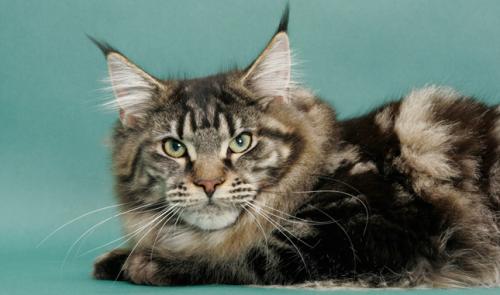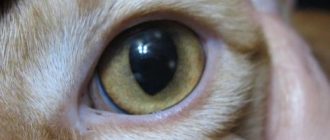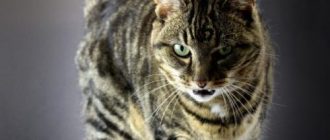The heart of cats has four chambers: the right and left atria; a also the right and left ventricles. The left ventricle is responsible for oxygenation of blood from the lungs and pumping it into the aortic valve. Hypertrophic cardiomyopathy (HCM) affects the left ventricle and its ability to pump blood into the aorta. At cardiomaties of the left ventricular muscle are abnormally enlarged or thickened. A cat, such as Maine Coon, may have other illnesses. hearts, but they may not be related to HCM.

Some breeds have a genetic predisposition to this. condition. In some families, Maine Coon cats had a particularly large number of cases have been reported. Cardiomyopathy is also found in American Shorthair and Persian cats, but the role of genetics in these cases is defined finally was not.
Most commonly, cardiomyopathy occurs in cats between the ages of 5 to 7 years, although the age range of reported cases significantly wider and ranges from 3 months to 17 years. Most cases of registration in this case occur in males. Heart murmurs in older cats are usually caused by other diseases. – hypertension and hyperthyroidism.
Symptoms and signs of the disease:
Contents
- Lethargy
- loss of appetite, anorexia
- Labored breathing
- Weak pulse
- Short, clicking sounds when breathing (crackling)
- Inability to bear physical activity
- Heart murmurs
- Sudden hind limb paralysis
- A discoloration of the paw pads of a bluish tint, which indicates for lack of oxygen
- Heart failure
Causes of Cardiomyopathy
The cause of cardiomyopathy in many cases remains unknown. However, it is known that genetic mutations and predispositions often lead to the development of the disease in some breeds of cats. Additional heart disease, such as hypertension or hyperthyroidism can further complicate cardiomyopathy in cats.
Diagnostics
You should provide a complete history of your cat’s health, until the onset of symptoms. Main ways diagnostic methods for cardiomyopathy in cats are ECG recordings (electrocardiograms) and radiography of the heart. For check animal for other illnesses he may need some other tests and analyzes. Hyperthyroidism appears as cardiomyopathy symptoms such as lethargy, heart murmur and dyspnea.
Treatment
If cardiomyopathy is diagnosed, your cat will need hospitalization for proper care, especially if she suffers from congestive heart failure, which often occurs when disease. Your cat will need a calm environment to minimize potential stress and if she has problems with breathing, she may also need oxygen therapy.
There are several drugs that can be used. for the treatment of cardiomyopathy:
- Heart Rate Slow Drugs & Treatments irregular heartbeats
- Beta-blockers – help slow down the heart rate abbreviations
- ACE inhibitors – used in cases with congestive heart failure
- Aspirin – used to reduce the risk of education blood clots
- Blood clotting drugs
- Diuretics – to remove excess fluid from organism
Disease Prevention and Control
The cat should be put on a sodium-restricted diet, especially in cases of congestive heart failure to maintain pressure is stable. She will also need to recover providing a calm and comfortable space in the house, away from sources of noise and other pets. Excess stress can activate the nervous system and load the already overloaded cat’s left ventricle, which in turn can lead to heart failure.
During the recovery period, you should carefully monitor following his cat, tracking breathing problems, lethargy, low appetite, soreness, or paralysis of the limbs. You also need will make sure that the animal is not exposed to actions, which could result in personal injury. After a course of treatment to a cat you will need to undergo a second ultrasound of the heart to determining progress and the need for further recovery.






